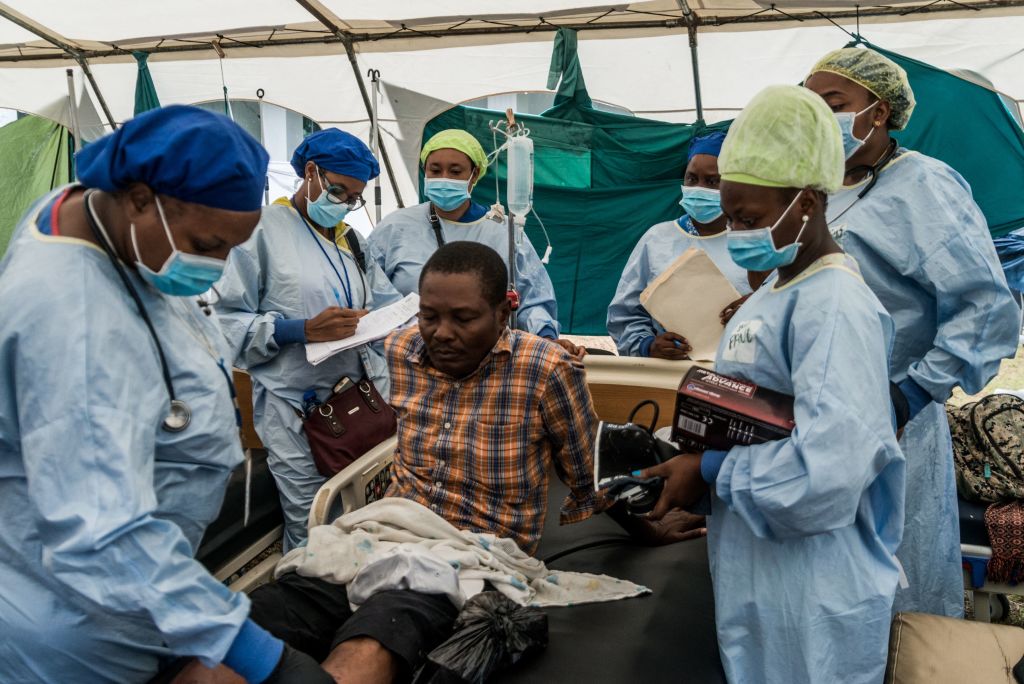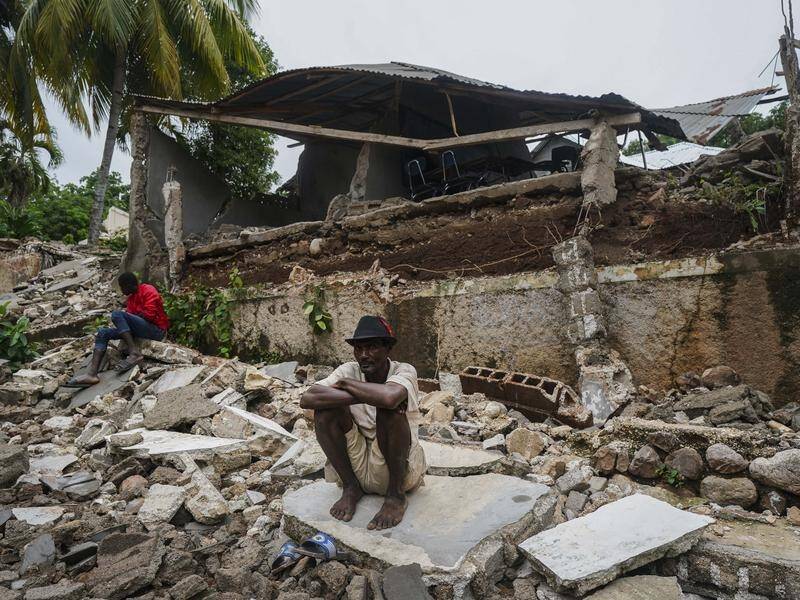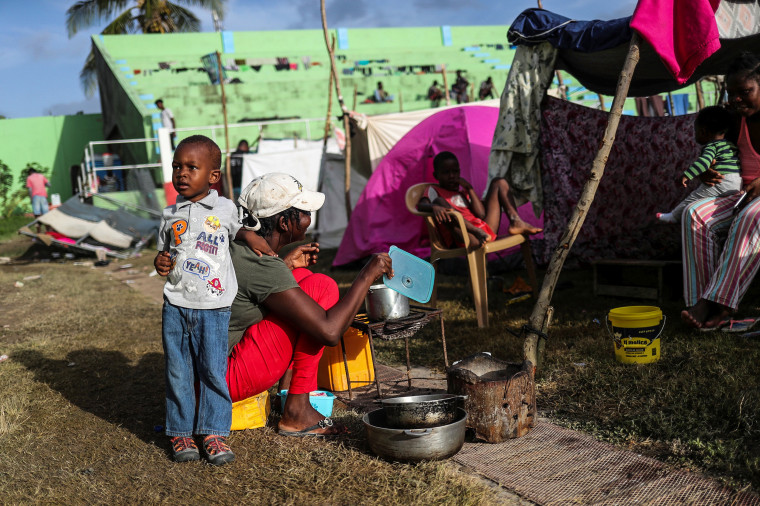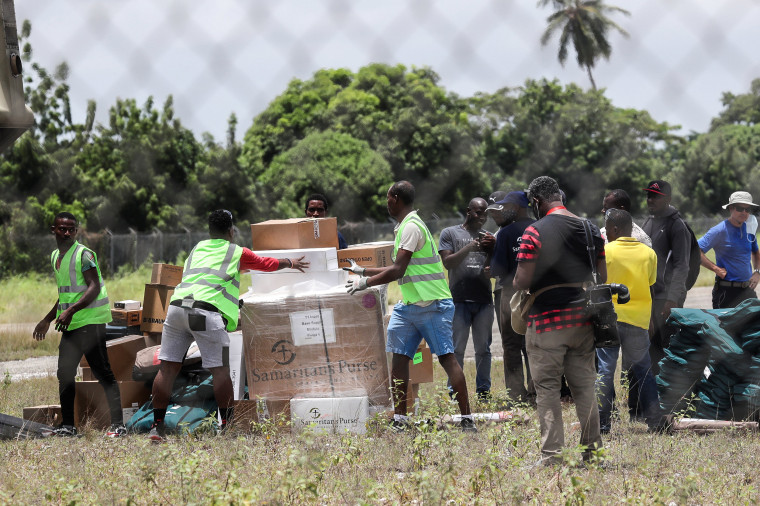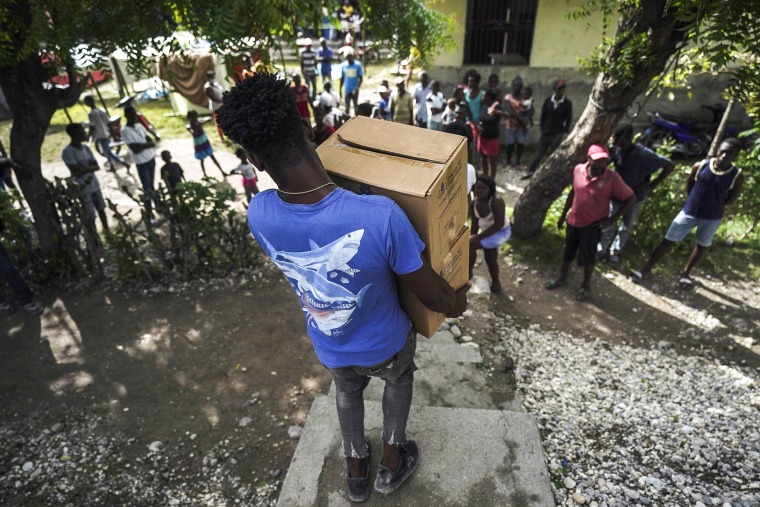AFFORDABLE HOUSING IS THE ELECTION ISSUE
Family of 7 forced to live in campground due to P.E.I.'s lack of affordable housing
Family of 7 hasn't been able to find housing within their budget of $1,800 per month
When Melinda and Chris Boyles lost their housing earlier this month, they and their five kids had nowhere to go.
Now, the Summerside, P.E.I.-based family of seven is living in a campground in Cavendish, hoping they'll find somewhere to live before the seasonal facility closes next month.
"In P.E.I., there's not really any affordable housing that's big enough for big families — like, we have five kids and we need a four-bedroom [home]," said Chris Boyles.
"Most of the places that they're building nowadays are just two bedrooms and they're calling it affordable housing, that's $1,500 [each month]."
Chris Boyles is the sole income-earner for the family. Melinda, who has pain and complications from previous injuries that prevent her from working, cares for their five children, who range in age from six to 18.
So far, they have not been able to find housing that fits their whole family and that's within their budget of $1,800 a month.
'Either you pay rent or you get groceries'
Last summer, the family purchased a camper in order to spend more time together, but they never thought they would find themselves living in it.
"We already had the place booked here and then the [campground] owner found out about what was going on," Chris said. "He arranged for us to stay here until Sept. 21."
The Boyles were forced to leave their previous home and could not find anything in their price range, which they say is about $1,300 a month without utilities (or $1,800 with utilities).
"Finding a four-bedroom that's affordable, it's been like around $1,800-$2,000 and sometimes nothing included," Melinda said.
"It's either you pay rent or you get groceries. Sometimes, you can't do both," Chris added.
The family said they were turned down for low-income housing because they earn too much money. Financing for a mortgage was also not possible, as they are unable to come up with a large enough down payment.
The government should be doing more and should be doing it much faster.— Connor Kelly, P.E.I. Fight for Affordable Housing
"Since we haven't had to look for a place in 10 years, seeing the different prices of rent was a little shocking," Melinda said.
"Shocking wasn't the word for it," Chris said. "No normal person can afford that … it puts a lot of people out in the street because of it."
Although they are prepared to be flexible if needed, the family would really like to stay in the Summerside area, with proximity to the supports and services that have helped their children.
"With all their challenges... they all have ADHD, so with that, it helps having them in the same school with the same teachers, and then our oldest … he goes to Community Connections, and that's in Summerside also," Melinda said.
"We like to keep them around their friends," Chris said.
The family is also not prepared to part with their pets — a dog, a cat and a rabbit — so they need an animal-friendly solution.
"Our kids [have] got anxiety issues and stuff like that, and the animals seem to help with it," Chris said.
Dignified housing for all
The Boyles said they have heard of other families in their situation. The P.E.I. Fight for Affordable Housing (PEIFAH) has, too.
"I know, off the top of my head, at least two or three people just in the last couple of months who have been put in that position. Both individuals and then people with families," said Connor Kelly, tenant network co-ordinator for PEIFAH.
"And that was them thinking that they had their situation pretty well handled compared to others, where they had a campground to go to, or ... a trailer or something."
As housing and rent prices increase in the province, Kelly said affordability is becoming an issue for more families, and multi-bedroom units are becoming more scarce.
"The vacancy rate for three-bedroom apartments just in 2020 was like 0.4 per cent, and that's three bedrooms, so four bedrooms are, like, basically non-existent," he said.
According to the Canada Mortgage and Housing Corporation, P.E.I.'s vacancy rate reached 2.6 per cent in October 2020, roughly on par with Vancouver and Montreal, although nearly a full percentage point below Toronto.
For the two years prior to that, P.E.I. had the lowest vacancy rate in the country, bottoming out at 0.3 per cent in 2018, and climbing to 1.2 per cent in 2019.
A CMHC report released earlier this year showed that rents continued to rise at a rate well above the maximum allowed by the Island Regulatory and Appeals Commission. It found the average rent for an apartment on P.E.I. was $916, a 3.8 per cent increase.
"Everybody should have their needs met. That's the point of having a society or a government that's organized to support the people that live in it ... just because you have more children than somebody else, you can't find a home? Isn't fair in the slightest,"Kelly said.
For the P.E.I. Fight for Affordable Housing, the solution to the problem is more housing built by government bodies accountable to the public, as opposed to relying on the private sector to provide dignified housing for everyone.
They just think we're camping for the summer, so they don't understand that we don't have a place to move into right now.— Melinda Boyles
"It's more expensive for someone to maintain units that house big families, so it gets harder for big families to find and maintain housing. That housing gets more cramped," Kelly said.
"As long as ... the focus of housing is to make money off of it, this really isn't going to change.
"It's going to take the public organizing and pressuring the government to be responsible for the society that they are supposed to be in control [of] ... the government should be doing more and should be doing it much faster."
Staying positive for the kids
The Boyles remain optimistic that they will find somewhere to live before the Cavendish campground closes for the year, but say the situation has them quite stressed.
"We're just trying to stay positive, I guess, for the kids, and don't want them worrying about it as much," Melinda said.
"We kind of try to hide our anxiety and stuff whenever the kids are around," said Chris.
"They just think we're camping for the summer, so they don't understand that we don't have a place to move into right now, but they're here, they enjoy it here. They go and play. They make new friends."
Come September, the family has some offers to temporarily stay with family and have found a two-bedroom unit they may have to take out of necessity.
In that scenario, one bedroom would go to the twin girls and another to the three boys — with Melinda and Chris on a pullout couch in the living room.
"If we have to, we have to," Melinda said. "We'll make do with what we have to right now."









